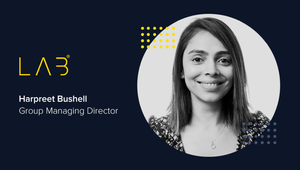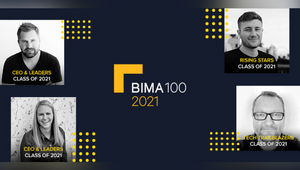
How Do You Get to the Truth?

This is the first of a series of articles focused on truth-hunting — the skill or habit of being able to get to the real reason behind a particular scenario, event or belief. This is the foundation for producing great consistent outcomes.
In this article we take a look at cognitive biases. Why? Because we all make hundreds, if not thousands, of decisions every day. As human beings, our decisions are influenced by our own understanding of the world in addition to cognitive and behavioural biases that affect us. Biases are short cuts to decisions which lead us to what we think are informed and rational outcomes, but turn out to be quite the opposite.
There is a long list of decision-making and behavioural biases that can affect our ability to accurately understand reality. Below are examples of a few of these, how they can affect us and some tips on using them in your favour.
Fundamental attribution error
This is also known as the correspondence bias or attribution effect. This occurs when we explain someone’s behaviour by placing too much emphasis on the agent (person or intention) within a particular scenario rather than context and external factors. The funny thing is that this is reversed when we look at our own actions and behaviours.
For example, suppose you are working late in the office reviewing statistics for a recent campaign. You decide to produce a new presentation for the team, but misinterpret one of the pieces of information. During the run-through this mistake becomes clear. You attribute the error to working late, having a lot on and the campaign being run across multiple channels. But when another colleague is presenting a report and a similar error is highlighted, you see the person as incompetent, bad with numbers and lacking attention to detail.
This is especially important for companies today. Customers are able to communicate across many channels. If one interaction is bad then that person comes away with a poor view of the company or brand as a whole.
For the reverse of this see the Halo Effect.
Takeaway: The next time you find yourself judging someone, stop and think about the amount of emphasis you are putting on them versus external factors and the context they were in. If you are struggling, try to ask questions that allow you to find out more about their surroundings, mindset and intent at the time.
Anchoring
This is where we anchor ourselves to the first piece of information and then find it hard to adjust when others are presented. One strong example of this is when you are shopping. If you walk into a clothing store and the first item you see is a £2,500 suit, then when you find a £100 jumper it seems like good value. However, if the first item you see is a £9.99 t-shirt then the £100 jumper seems very expensive.
Anchoring also relates to emotion as we anchor feelings to particular people, places, sights and smells. This is why someone that comes away from a brand interaction with a positive emotional response starts to anchor that to the brand resulting in higher memorability and engagement.
This is fundamental to success today.
Takeaway: One way to avoid unhelpful anchoring is to become aware of the bias, gather wider sources of information and change your emotional state when reviewing details around decision making to see if you get a different perspective.
Loss aversion
Ultimately, we feel losses more than we value gains. It is thought that the psychological pain of losing something is twice as powerful as the pleasure of gaining something. This results in behaviour where more people are willing to take risks to avoid a loss rather than put themselves in a position to potentially gain.
This is one reason that free product trial periods and sample items work well…providing they deliver on their brand promise of course.
Language also plays a part in this. You'll notice people promote products on special offer or for a limited time period with captions like, “Don’t miss out!” or, “Don’t lose £10 per month on your energy bills.” It can also be used in campaigns where you invite your customers to imagine themselves owning your product (say, a car) so that they'll not want to feel the loss of that experience. Scarcity is a strong emotional driver linked to loss aversion, where we place higher value on things that are limited or hard to get. Great examples are products you can no longer buy, private members clubs and one-off experiences or unique items.
Takeaway: Test out using loss aversion language on offers for products and services and see if they perform better than your standard messaging.
Confirmation bias
Confirmation bias occurs when we search for information that confirms our current set of beliefs. We give less value or consideration to anything that goes against these. It results in systematic errors in our inductive reasoning.
This is increased when the beliefs are emotionally charged or very deeply held. Polarisation of opinion, where two people (or two groups of people) with differing opinions are exposed to the same information can then move further and further apart in terms of their beliefs. It also explains belief perseverance, where someone won’t change their mind even when their information is shown to be false.
Digging in deeper to this bias yields two other subsets:
Illusory correlation happens when people perceive an association between two events or situations which doesn’t actually exist. And irrational primacy effect takes place when greater value is placed on information found earlier on.
You don’t have to look far to find examples in religion, science and politics to see this in action and you can probably think of a recent interaction you’ve had where this has happened.
Takeaway: The next time you experience a conversation where you seem to be getting further away from the other person in terms of opinion, or where it doesn’t go as expected, review your discussion with the perceptual positions exercise which can be found here.
You could say that most people do not primarily aim at truth in testing hypotheses, but rather try to avoid the most costly errors. For example, when interviewing, one-sided questions are usually asked because the interviewer is primarily focused on highlighting unsuitable candidates.
The connection between confirmation bias and social skills is one of interest. If we can self-monitor, becoming more sensitive to our environment and to social norms, we can ask better questions and arrive with a more truthful view of our world. This puts us in a stronger place. What we then do with that information is up to us!
Tom Head is a Director at LAB










